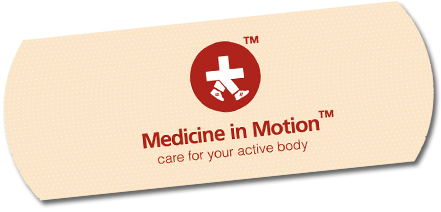
In conjunction with the 16th annual National Athletic Training Month in March, Medicine in Motion has undertaken an educational initiative to inform the public of the breadth and depth of athletic trainer expertise in taking care of all kinds of injuries and all kinds of active people. The nationwide event is sponsored by the National Athletic Trainers’ Association (NATA), a not-for-profit organization based in Dallas, Texas. This year’s theme is “A Safer Approach to Work, Life and Sport.”
“Athletic trainers are health care professionals who work in a variety of settings and with all kinds of people – not just athletes,” said Dr. Pyron, Austin sports medicine doctor and owner of Medicine in Motion. “They prevent, assess, treat and rehabilitate injuries and illnesses of a wide variety.”
Athletic Trainers (ATs) work in a variety of settings and provide numerous health care services. Some facts about ATs include:
1. Athletic trainers save lives. Sports injuries can be serious. Brain and spinal cord injuries and conditions such as heat illness can be life threatening if not recognized and properly handled. ATs are there to treat acute injuries on the spot. Athletes have chronic illnesses, too. People with diabetes and asthma can and do safely work and exercise, and the athletic trainer can help manage these critical health issues as they relate to physical exertion.
2. Not all athletes wear jerseys. The duties of many workers – such as baggage handlers, dancers, soldiers and police officers – require range of motion and strength and stamina, and hold the potential for musculoskeletal injuries. ATs work with individuals in various settings to help with the prevention and treatment.
3. Athletic trainers are experts. Working to prevent and treat musculoskeletal injuries and sports-related illnesses, athletic trainers offer a continuum of care unparalleled in health care. ATs are part of a team of health care professionals – they practice under the direction and in collaboration with physicians. ATs are specialists; they work with physically active people to prevent and treat injuries and conditions. ATs aren’t personal trainers, who focus solely on fitness, conditioning and performance enhancement. ATs are health care professionals.
4. The athletic trainer is the health care system for athletes and others. Athletic trainers are on site. They work with patients to avoid injuries; they’re there when injuries happen and they provide immediate care; and they rehabilitate patients after injuries or surgery. It’s a continuum of care. They know their patients well because they are at the school, in the theater or on the factory floor every day.
5. Athletic trainers take responsibility and lower risk. School administrators, athletics directors and coaches have their own jobs, which may pose a conflict of interest with athlete safety; they are not experts in managing injuries or sports-related illnesses, nor should they be responsible to do so. Handling injuries at school or at work, rather than sending the patient to the emergency department, saves money and time loss – and gets them back to their activity faster. Just as professional athletes do, recreational athletes should have access to athletic trainers.
Medicine in Motion (MIM) specializes in providing top quality sports medicine in Austin, Texas, for athletic individuals of all ages and levels. The staff at MIM believes active bodies are healthy bodies, therefore it is the office’s goal to keep patients energetic and fit. To that end, MIM provides treatment of injuries and illnesses, including the use of physical rehabilitation; promotes healthy living with personal training and nutrition coaching; and offers comprehensive sports medicine evaluations to optimize health, activity level and sports performance. For more information or for questions regarding sports medicine in Austin, contact Medicine in Motion at 512-257-2500 or visit the website at http://www.medinmotion.com.
